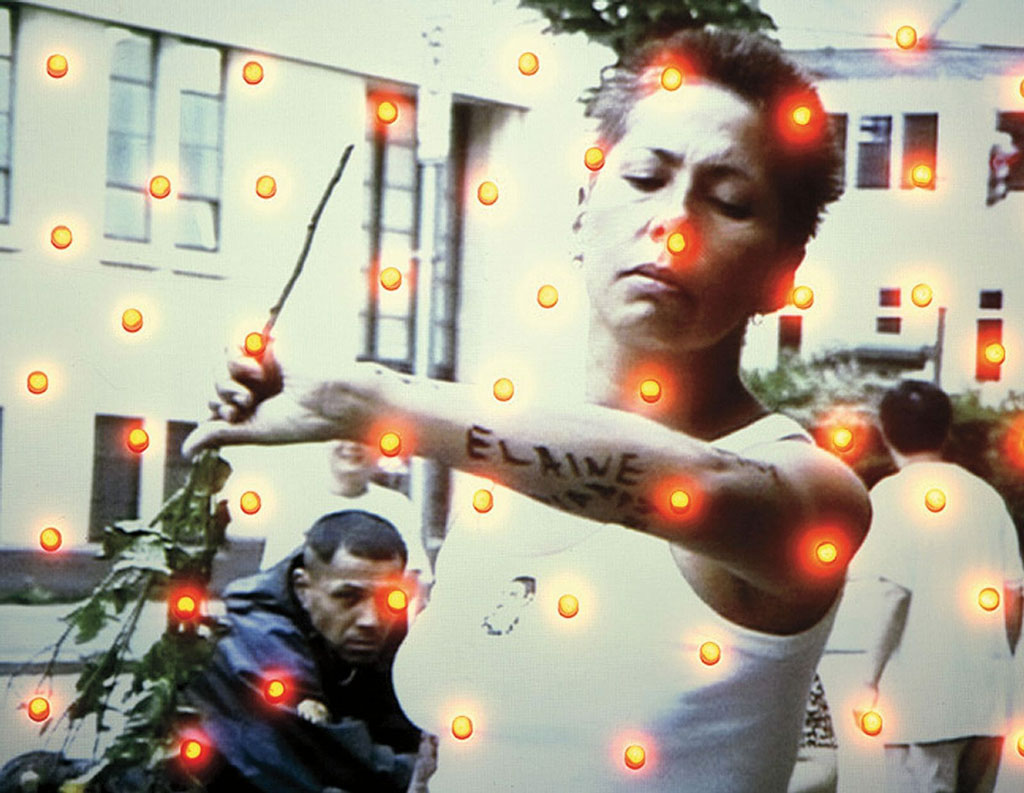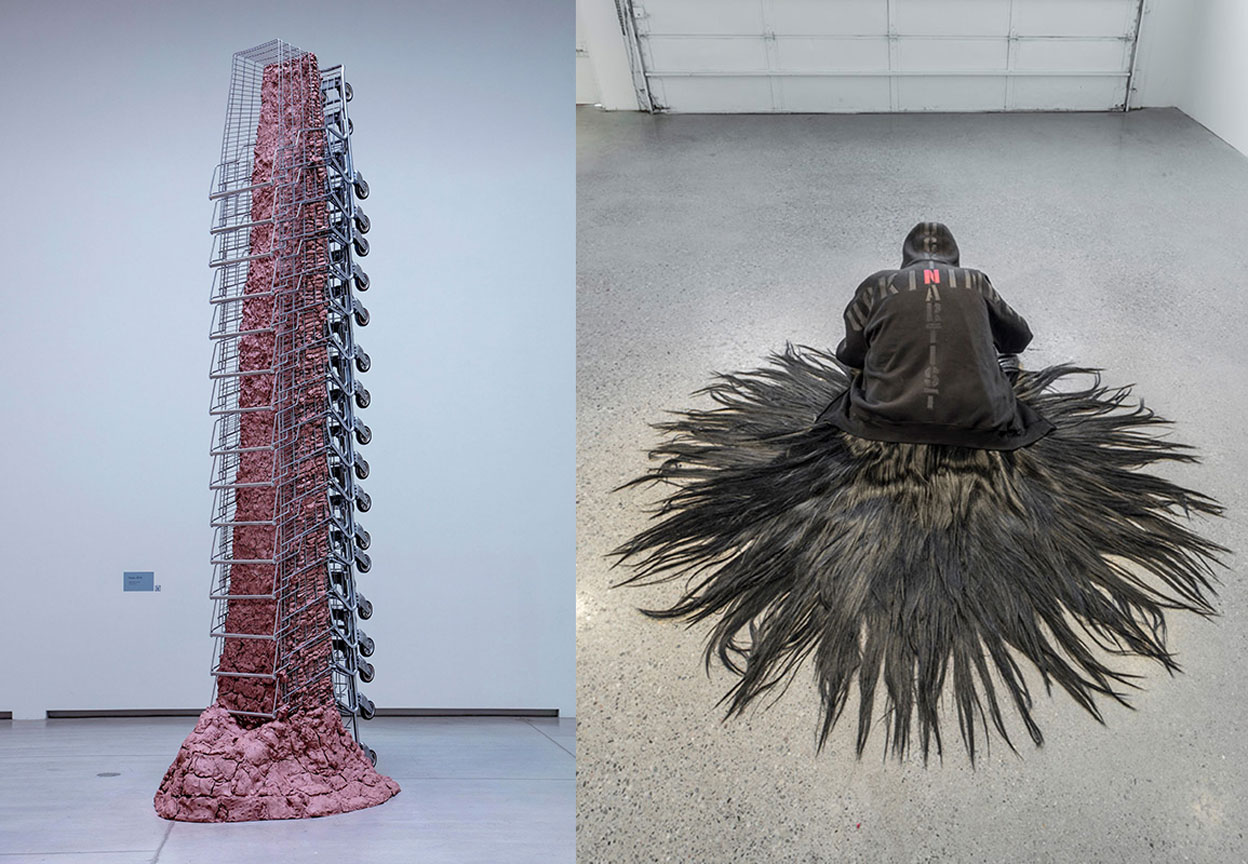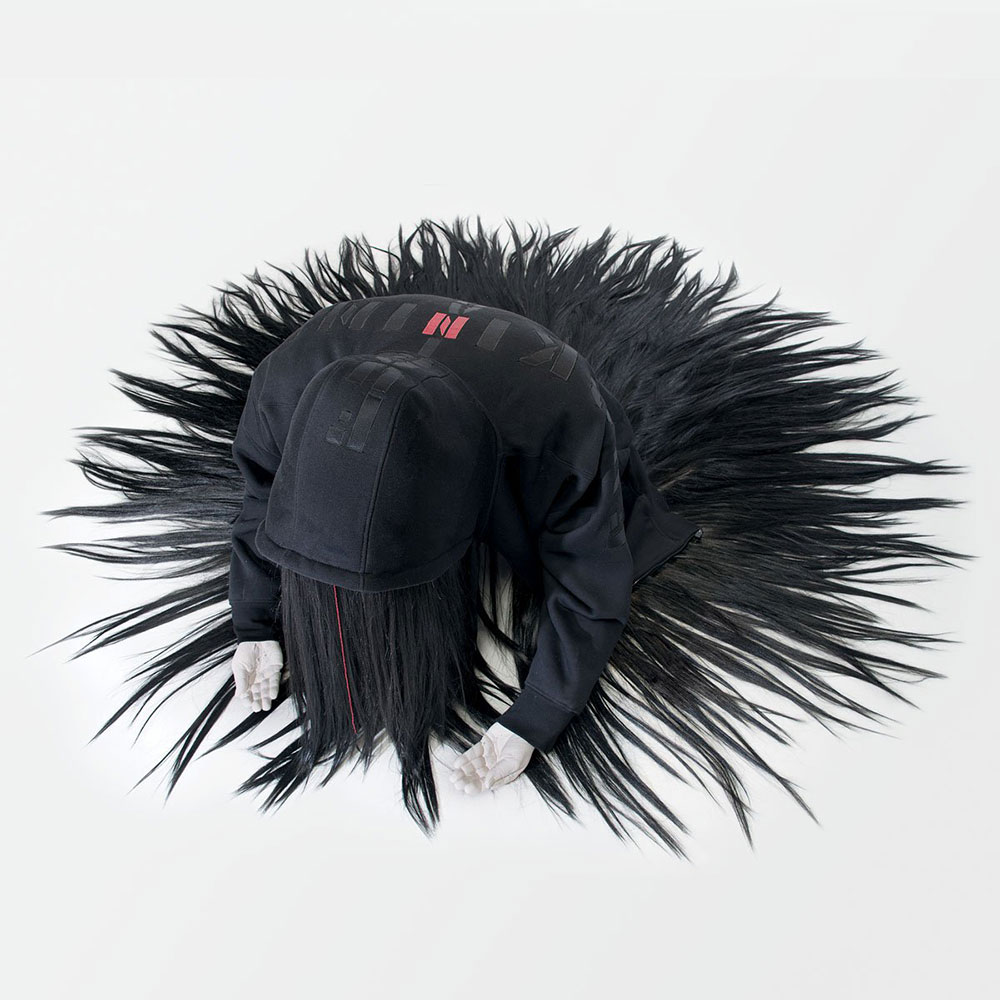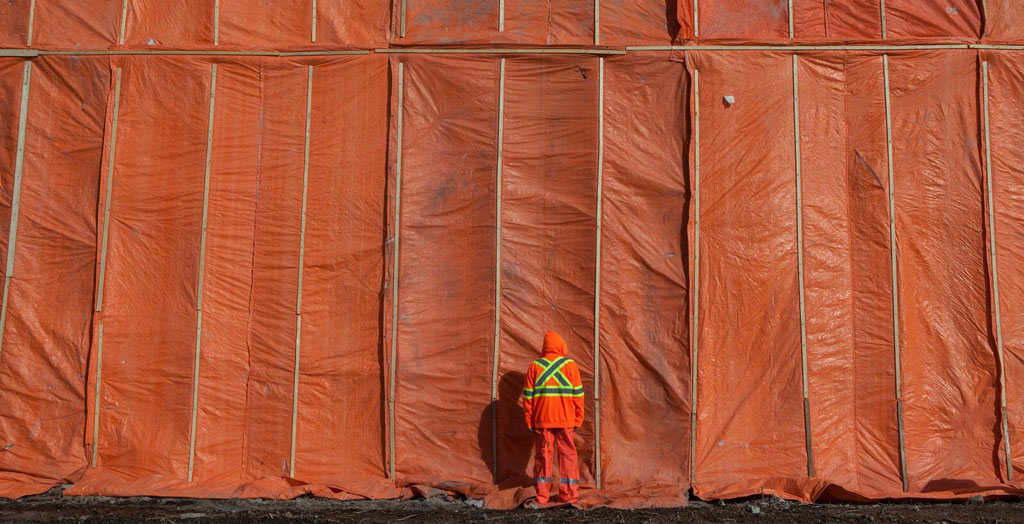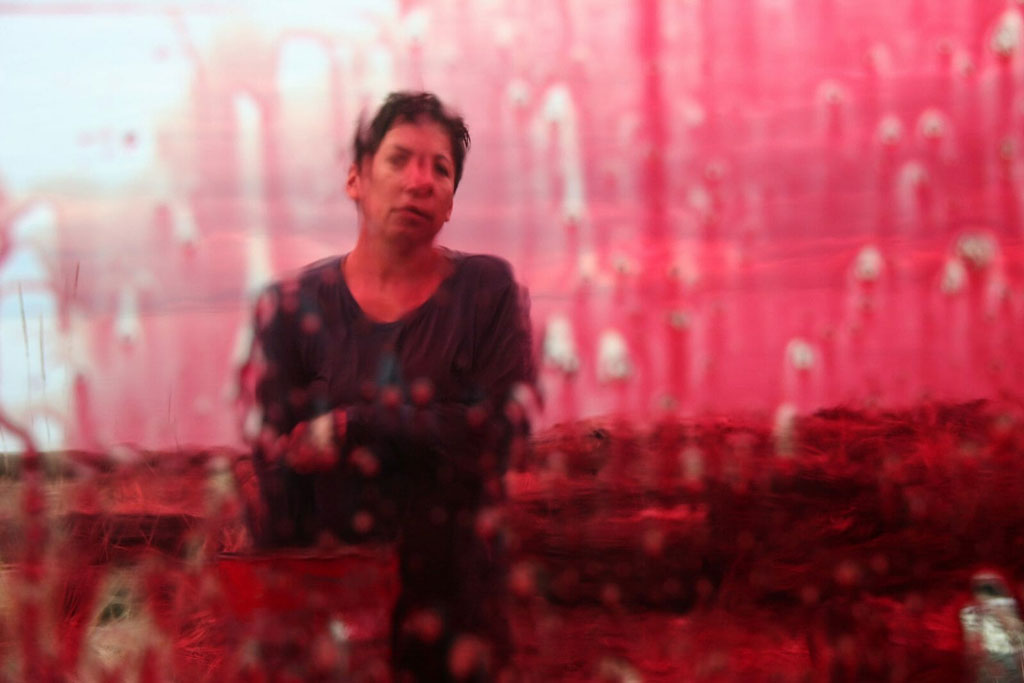ART-PRESENTATION: Rebecca Belmore
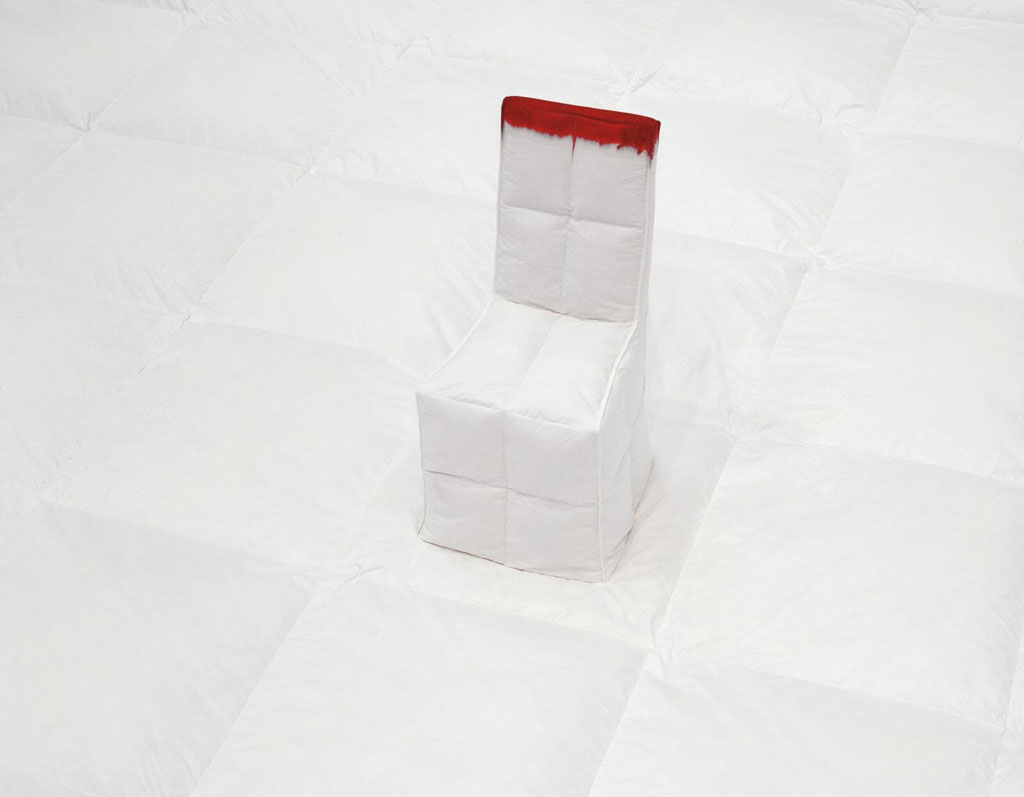 The Canadian artist Rebecca Belmore started working as a performance artist in the late 1980s. The immediacy and presence of that discipline continue to influence her diverse practice. Themes in her work include conflicts and issues related to climate change, access to water, land use, homelessness, and human migration and displacement.
The Canadian artist Rebecca Belmore started working as a performance artist in the late 1980s. The immediacy and presence of that discipline continue to influence her diverse practice. Themes in her work include conflicts and issues related to climate change, access to water, land use, homelessness, and human migration and displacement.
By Dimitris Lempesis
Photo: MAC Archive
Rebecca Belmore is an Anishinaabe* artist and member of the Lac Seul First Nation community. Her work over the past 30 years has placed her at the forefront of contemporary Indigenous art in Canada, and made her a recognised face within a country-wide movement to address the underrepresentation of First Nation voices in major institutional exhibitions and collections. “Facing the Monumental” is Rebecca Belmore’s largest exhibition of her work to date and a major overview of the past 30 years. Included are over 20 major sculptures, installations, photographs and performance-based works like “Rising to the Occasion”, “The Named and the Unnamed” and “Fountain” as well as a showcase of new works by the artist. The rich body of work presented includes sculptures, installations, photography and videos, some of which are based on performances. With boundless beauty, sensitivity and resilience, her work explores our problematic relationships with territory, women’s lives, historic events and ongoing violence against Indigenous peoples. As a performance artist, Belmore possesses an unremitting control over her audience, a surprising feat given the largely improvisational, unscripted nature of her work. The massacre at Wounded Knee (29/12/1890) and the 2002 discovery of the remains of dozens of missing women, many of them Aboriginal, at a pig farm outside Vancouver were the subjects of Belmore’s installation “Blood on the snow”. The work presents a pristine white blanket of snow defiled by the blood of the dispossessed. Blood running down a white chair at the centre of the blanket seems to stand for pain and violence in the midst of cold, white indifference. For Belmore, it is an extension of ongoing violence against Aboriginal people. Throughout “One thousand One hundred & eighty One”, her approach was measured, her demeanour implacable. Over the course of the day, she hammered 1,181 nails into a tree stump, each nail representing one of the murdered and missing Indigenous women. Dressed in a construction vest, she worked methodically in front of the Hart House building, hammering slowly and consistently. The piece began to crescendo in the early evening: after placing the final nail, Belmore began to shout out, in an agonized but clear voice, the number. She repeated it over and over, until it began to take on some of the weight it deserves. “Rising to the Occasion” is a sculpture and performance artifact that consists of the gown that Belmore made, and wore during the Twelve Angry Crinolines performance event. The work is an “angry crinoline” dress modeled on the Victorian tea gown, with a bodice incorporating two “breastplate” saucers made of English bone china and a massive satin and velvet skirt festooned with royal wedding memorabilia, and bustled with a big facsimile beaver lodge made of sticks and debris and kitchen utensils. In “Mixed Blessing” a figure kneels and bends low, dark hair spilling to the ground from a dark hoodie in the back bears the words “FUCKIN INDIAN” and “FUCKIN ARTIST” in the form of a cross, the work showcases Belmore’s black humour at having doubled-down for disdain in the world at large. “The Named and the Unnamed” is a video installation where the video document of Belmore’s performance entitled “Vigil” is projected onto a screen embedded with approximately 50 lightbulbs. Vigil took place on June 23, 2002 at the corner of Gore Street and Cordova Street in Vancouver. “Fountain” is a single-channel video projected onto falling water that deals with elementals or essences: fire + water = blood. The time is both now, in the industrialized landscape of North America, and in another zone, a time of creation, myth and prophecy. The element of water is represented both as a body of water in the projection and literally as a wall of falling water. Water turns to blood. As befits our times we do not know whether this is a metaphor for creation or an apocalyptic vision. The sculpture “Tower” is a pillar of shopping carts stacked high around a clay column, looms over another piece, tarpaulin, a grimy blanket-sized swatch draped over a ghostly human form. Shopping carts are essential tools for the homeless, whose population has exploded amid skyrocketing housing costs during her time in Vancouver; and tarps are maybe their most important means of survival. “Sister” was a site-specific work installed in the Audain Gallery at Simon Fraser University. The work was intended to be seen by participants of the February 14, 2010 Annual Women’s Memorial March for missing and murdered Indigenous women. sister faced Hastings Street in Vancouver’s Downtown Eastside. In 1823, English furriers captured Demasduit’s niece, Shanawdithit, who lived in St. John’s until her death in 1829 and became legendary as the last of the Beothuk. In “Shanawdithit, The Last of the Beothuk”, Belmore commemoratively evokes the woman’s presence (and absence) with haunting stone sculptures of her feet and hands, rounded as if worn by water, sensuously connecting her to the land from which she was taken. These objects also suggest traces of primitive culture, the artifact-like qualities echoing the anthropological interest Shanawdithit endured. Materially diverse and aesthetically compelling, Belmore’s works are often grounded in specific stories, events, or individuals, and address issues that are central to the lives of Indigenous peoples. Her poetic representations of human dignity, the beauty of youth, a sleeping subject, the power of water, or the quieting effect of snow all provide a contrast to the turmoil of our world.
* Anishinaabe is the autonym for a group of culturally related indigenous peoples in what are now Canada and the United States.
Info: Curator: Wanda Nanibush and Lesley Johnstone, Musée d’art contemporain de Montréal (MAC), 185 rue Sainte-Catherine Ouest (corner Jeanne-Mance), Montréal, Duration: 20/6-6/10/19, Days & Hours: Tue 11:00-18:00, Wed-Fri 11:00-21:00, Sat-Sun 10:00-18:00, https://macm.org

